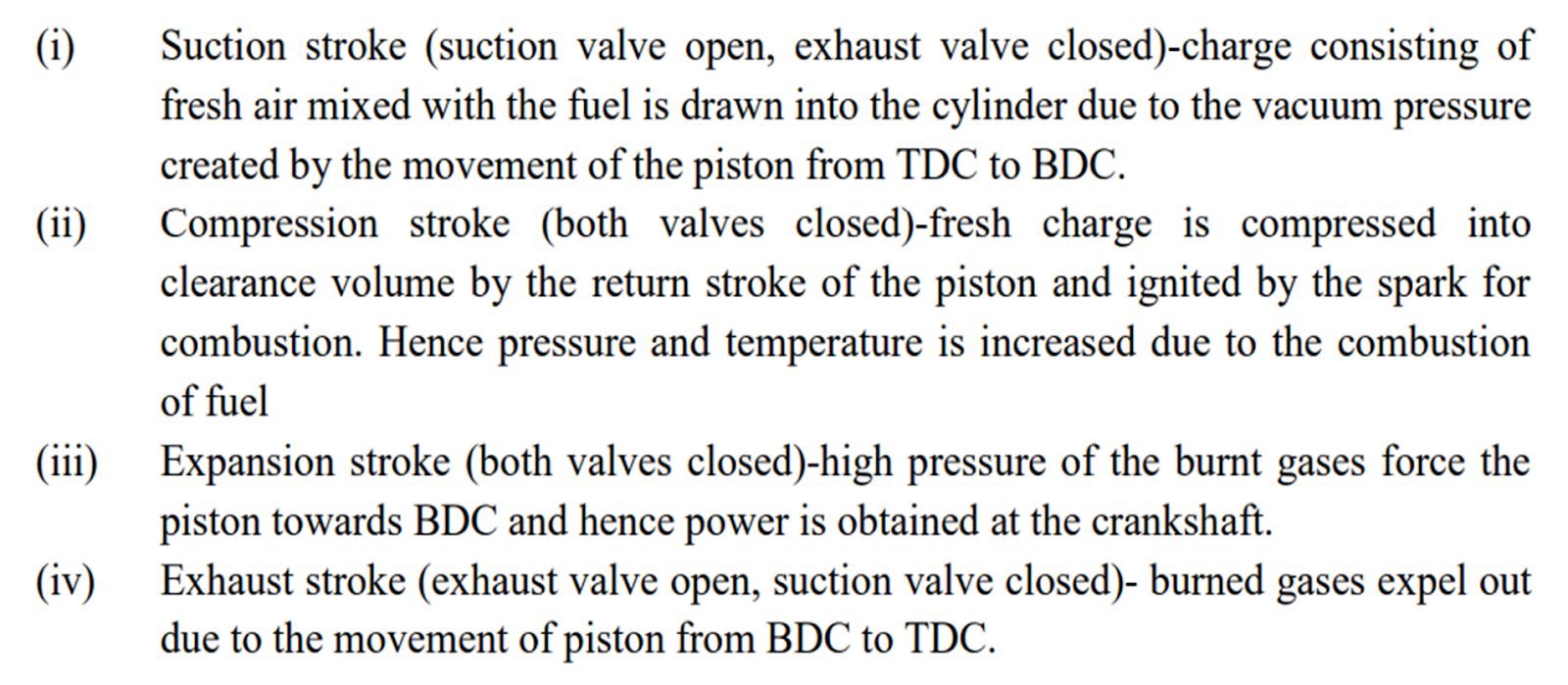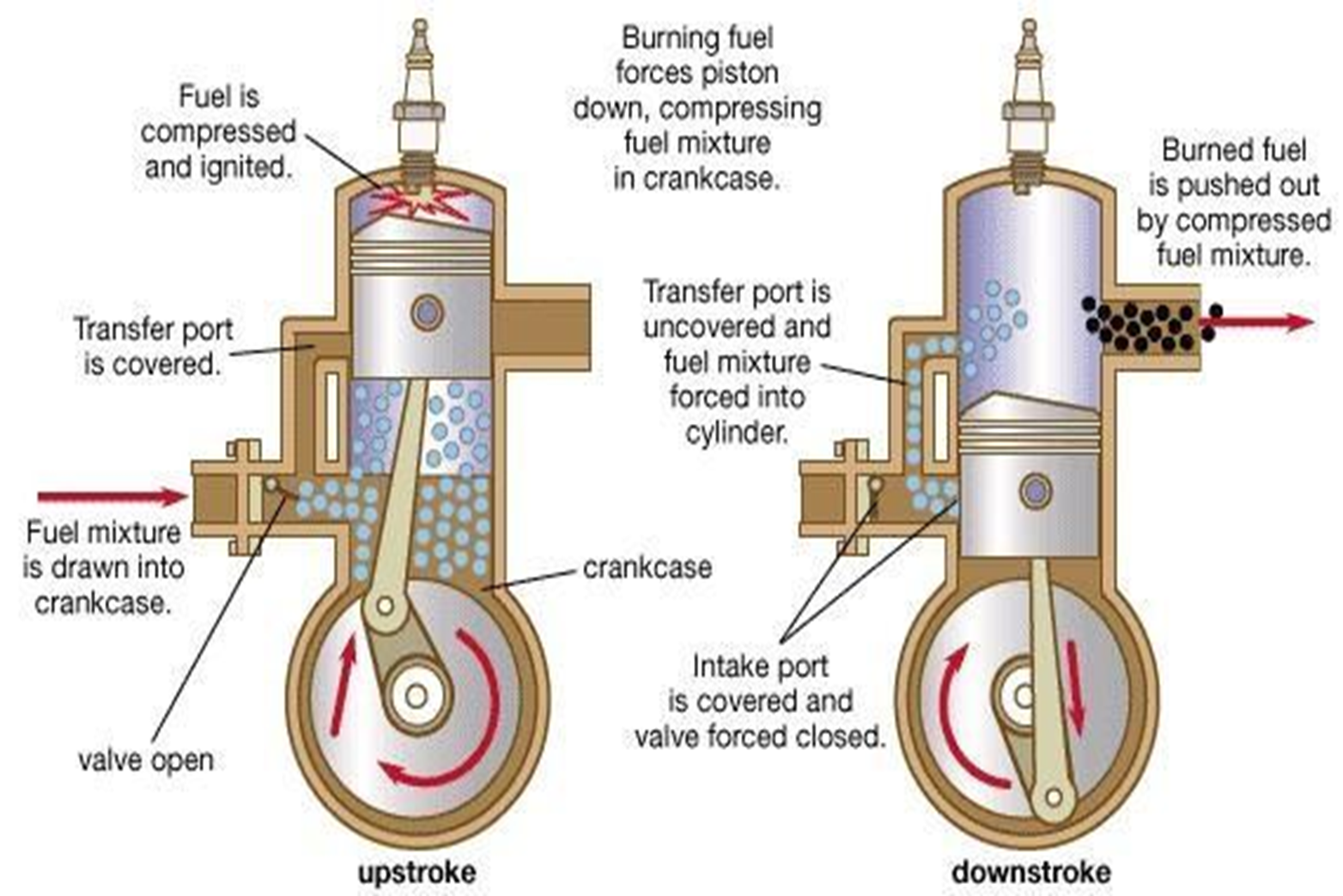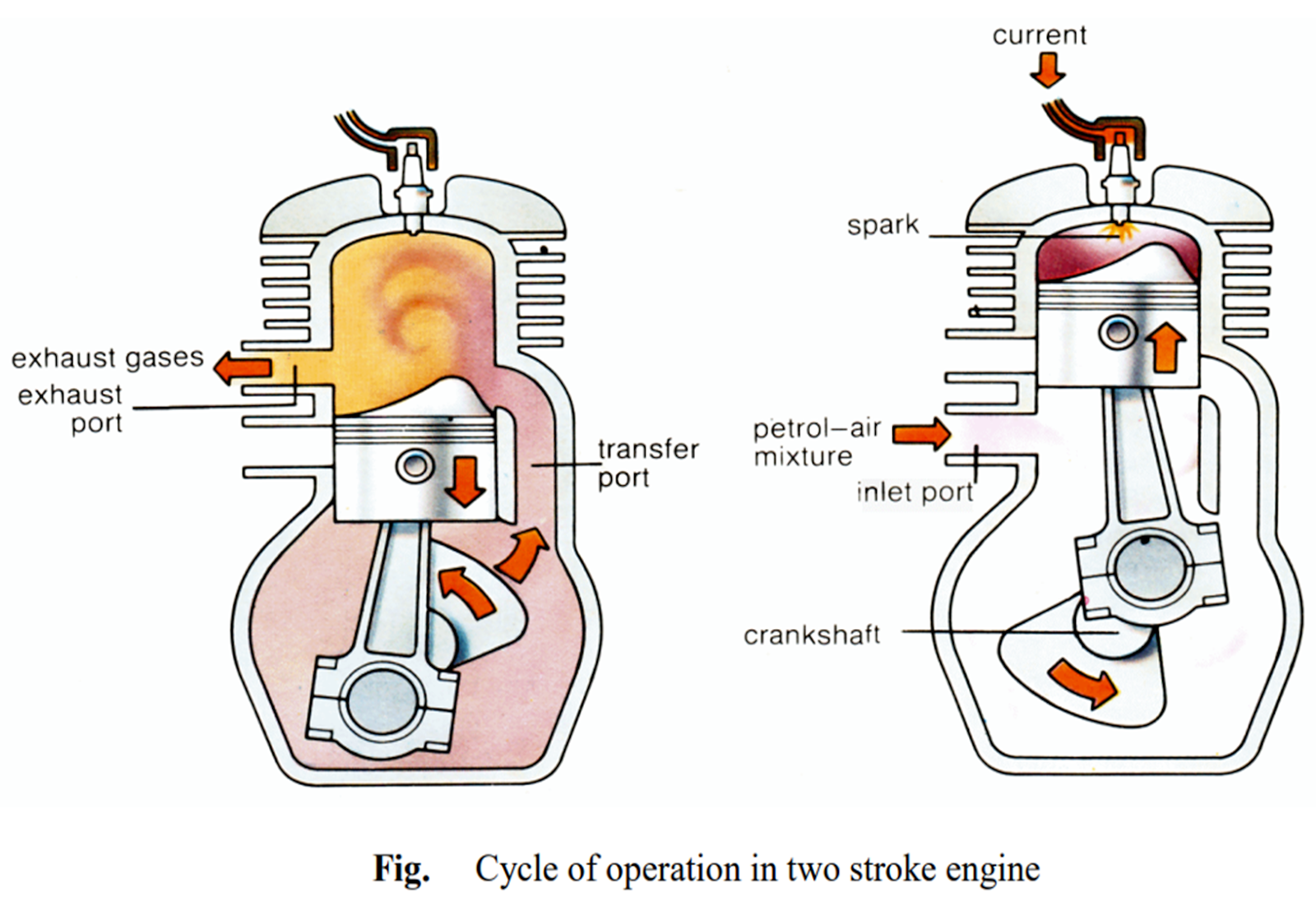Hello everyone on this page we will discuss the four-stroke and two-stroke engines: for simplicity, we can say that a four-stroke cycle would have a four-piston stroke and a two-stroke cycle would have a two-piston stroke.
Four-stroke and two-stroke engines are two different
types of internal combustion engines that are commonly used in various
applications, including automotive, marine, and small engine applications. Here
are some key differences between these two types of engines:
Four-stroke engines:
- They require
four strokes or cycles to complete a full combustion cycle: intake, compression,
power, and exhaust.
- They have a
separate intake and exhaust valve for each cylinder, allowing for more
precise control over the engine's operation.
- They
typically produce more power and torque than two-stroke engines of similar
size.
- They are
generally more fuel-efficient and produce fewer emissions than two-stroke
engines.
- They require
a more complex design and have a higher manufacturing cost than two-stroke
engines.
- They are
commonly used in larger applications such as automobiles, trucks, and
generators.
Two-stroke engines:
- They require
two strokes or cycles to complete a full combustion cycle:
compression/ignition and exhaust/intake.
- They have a
single intake and exhaust port for each cylinder, which simplifies the
engine design.
- They
typically produce less power and torque than four-stroke engines of
similar size.
- They are less
fuel-efficient and produce more emissions than four-stroke engines.
- They have a
simpler design and are less expensive to manufacture than four-stroke
engines.
- They are
commonly used in smaller applications such as motorcycles, chainsaws, and
boats.
Overall, the choice between a four-stroke and
two-stroke engine depends on the specific application and the required power
output, fuel efficiency, and emission levels. While four-stroke engines are
generally more efficient and produce fewer emissions, two-stroke engines have a
simpler design and are more compact, making them ideal for certain applications
where space and weight are a concern.
Difference between four-stroke and two-stroke engines
Four-stroke and two-stroke engines are two different
types of internal combustion engines that are commonly used in various
applications. Here are some key differences between these two types of engines:
- Cycle: The main difference between
four-stroke and two-stroke engines is the number of strokes required to
complete a full combustion cycle. A four-stroke engine requires four
strokes or cycles (intake, compression, power, and exhaust) to complete a
full combustion cycle, while a two-stroke engine requires only two strokes
or cycles (compression/ignition and exhaust/intake).
- Design: Four-stroke engines have a more
complex design compared to two-stroke engines. They have separate intake
and exhaust valves for each cylinder, which allows for more precise
control over the engine's operation. On the other hand, two-stroke engines
have a simpler design, with a single intake and exhaust port for each
cylinder.
- Power and
torque: Generally,
four-stroke engines produce more power and torque than two-stroke engines
of similar size. This is due to the fact that four-stroke engines complete
a full combustion cycle in four strokes, allowing for more efficient power
generation.
- Fuel
efficiency and emissions:
Four-stroke engines are generally more fuel-efficient and produce fewer
emissions than two-stroke engines. This is because they have a more
complete combustion process and can use a leaner fuel mixture. Two-stroke
engines are less efficient and produce more emissions because some of the
fuel mixture is lost during the exhaust stroke.
- Cost: Four-stroke engines have a more
complex design and require more parts than two-stroke engines, making them
more expensive to manufacture.
Some short questions and their answers:
What is the main difference between four-stroke and
two-stroke engines?
Answer: Four-stroke engines require four strokes or cycles to complete a full combustion cycle, while two-stroke engines require only two strokes or cycles.
Which type of engine has a more complex design?
Answer: Four-stroke engines have a more complex design compared to two-stroke engines.
Which type of engine generally produces more power and
torque?
Answer: Four-stroke engines generally produce more power and torque than two-stroke engines of similar size.
Which type of engine is more fuel-efficient and
produces fewer emissions?
Answer: Four-stroke engines are generally more fuel-efficient
and produce fewer emissions than two-stroke engines.
Which type of engine is less expensive to manufacture?
Answer: Two-stroke engines have a simpler design and
are less expensive to manufacture than four-stroke engines.
Some MCQ questions:
- What is the main difference between a four-stroke engine and a two-stroke engine?
Answer: c) The number of strokes required to complete
a full combustion cycle.
- Which type of engine has a simpler design?
Answer: b) Two-stroke engine.
- Which type of engine produces more power and torque?
Answer: a) Four-stroke engine.
- Which type of engine is more fuel-efficient and produces fewer emissions?
Answer: a) Four-stroke engine.
- Which type of engine is more expensive to manufacture?
Answer: a) Four-stroke engine.















18 Comments
Miss Mehbuba Begum